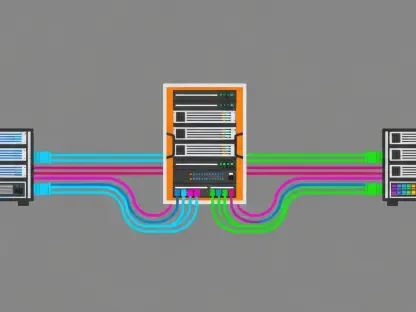Cisco’s Identity Services Engine (ISE) has recently been identified as having critical vulnerabilities that could pose severe risks if exploited, sparking urgent concerns within the cybersecurity community. Attackers who gain access can execute commands with root-level privileges, creating a significant threat to network security and integrity. These vulnerabilities, classified as CVE-2025-20124 and CVE-2025-20125, have been scored highly on the Common Vulnerability Scoring System (CVSS), underscoring the need for immediate attention and remediation from affected organizations.
Understanding the Identified Vulnerabilities
CVE-2025-20124: Insecure Deserialization of Java Byte Streams
The first highlighted vulnerability, CVE-2025-20124, stems from the insecure deserialization of user-supplied Java byte streams within a specific API of Cisco ISE. This weakness allows an attacker, who possesses valid read-only administrative credentials, to exploit it to execute arbitrary commands as the root user. Such exploitation results in unauthorized privilege escalation, which could have disastrous implications for the affected systems. The ability to execute commands at the root level can provide an attacker with complete control over the system, allowing them to manipulate configurations, extract sensitive data, or introduce malicious software.
The risk associated with this vulnerability is exacerbated by the fact that exploiting it requires only read-only administrative credentials. Despite this seemingly minimal requirement, the potential for substantial damage remains highly concerning. Attackers leveraging this flaw can circumvent security measures, leading to a compromised system’s integrity and making remediation efforts more complex and costly. This emphasizes the critical nature of maintaining strict access controls and monitoring any suspicious activity related to admin credentials.
CVE-2025-20125: Lack of Authorization and Data Validation
The second critical vulnerability, CVE-2025-20125, is due to a lack of authorization and improper validation of user-supplied data in another API of Cisco ISE. Attackers with read-only admin credentials can send specially crafted HTTP requests to the API, which can expose sensitive information, modify node configurations, and even restart nodes. These actions are not just potential system disruptions but can serve as a foothold for attackers to move laterally across a network, thereby broadening the scope of their attack and impact.
This flaw significantly heightens the risk of identity-based attacks, allowing adversaries to compromise multiple nodes and potentially expand their control across more extensive network regions. The ability to restart nodes and modify configurations could disrupt essential services, undermine security protocols, and increase overall vulnerability within the network. Moreover, since the attackers need valid admin credentials to exploit this vulnerability, it calls for enhanced measures to protect and monitor these credentials to prevent unauthorized access and exploitation.
Mitigation and Necessary Actions
Cisco’s Response and Patches
Acknowledging the severity of these vulnerabilities, Cisco has promptly addressed them by releasing patches for affected versions of Cisco ISE, including versions 3.1, 3.2, and 3.3. The company recommends users update to version 3.1P10, 3.2P7, and 3.3P4, respectively. For those still using versions 3.0 or earlier, Cisco urges an immediate migration to a fixed release. Updating to these patched versions is currently the only method available to mitigate these risks since no workarounds have been proposed.
Cisco’s swift action in providing patches illustrates their commitment to security; however, it is incumbent upon system administrators and security professionals to implement them promptly. Ensuring systems are updated minimizes the window of opportunity for attackers to exploit these vulnerabilities. Continuous monitoring and enforcement of security policies concerning administrative access further mitigate potential risks and bolster organizational defenses against future threats.
Long-term Considerations and Best Practices
Cisco’s Identity Services Engine (ISE) has come under scrutiny due to the discovery of critical vulnerabilities. These flaws could pose substantial risks if exploited by malicious actors, triggering serious concerns within the cybersecurity community. If attackers manage to gain access, they could execute commands with root-level privileges, presenting a dire threat to network security and integrity.
The vulnerabilities, identified as CVE-2025-20124 and CVE-2025-20125, have received high scores on the Common Vulnerability Scoring System (CVSS). This underscores the urgent need for immediate attention and action by impacted organizations to mitigate potential risks. Organizations utilizing Cisco’s ISE must prioritize assessing their systems and applying necessary patches to safeguard their networks from potential breaches.
In light of these findings, it’s crucial for IT departments to stay vigilant and ensure their security policies are up-to-date. Prompt action is required to protect sensitive data and maintain the trust of stakeholders.









